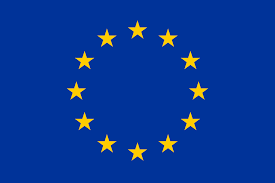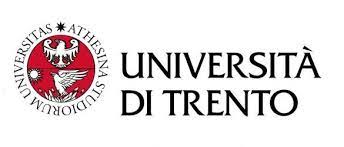About the Project
The first part of the ZOF project turns to the written sources and theory. The ideal ‘Roman Space’, as narrated in geographical treaties and list of provinces consisted of seemingly clearly defined and hierarchically ordered regions and linear borders. Current research, however, reveals that the Roman idea of internal places, the limits of its empire and the space beyond were surprisingly fluid and non-linear. After the dissolution of the western part of the Roman Empire, the areas split into many realms and power groups. New and old elites fought over hegemony and territory. Parallel to this, and intertwined with worldly structures, an ecclesiastical organisation of space evolved. Early medieval bishops, abbots (and, occasionally, abbesses) had the same territorial aims as worldly elites but applied other techniques of appropriation to further them. This resulted in the very peculiar European medieval order of space, where ecclesiastical territories had the same status as worldly ones. Further to the east, beyond large areas of in-between (a middle ground, as R. White would call it), former parts of the Roman Empire came under the control of groups which seemingly had had little or no connection to Romaness: Slavs, Avars, Bulgars etc.
By investigating the concept of territory as a discursive historical entity - and keep in mind that the nation state with well-defined borders and corresponding actors is a 19th- & 20th- century concept - we can deduce that this early medieval shift also resulted in a major change in the negotiation of territory and the creation and representation of power in space through discourse. While Merovingian sources reflect changes in elites and their topography of power to a certain degree (e.g., the view of areas beyond the eastern borders of the Frankish realms in ‘Fredegar’), the Carolingian empire again took up the Roman order of space. However, the Roman sources available to the Carolingian court and scholars are seemingly linear and clear when defining civitates and provinces. So, when reading Carolingian discourse on Roman space we must also ask the question: How did the Carolingians perceive Roman descriptions of space?
Together with the Carolingian ruler’s territorial aspirations these multiple layers of transmission, reality and idealised imagery resulted in a re-ordering and subsequent re-writing of space. This development can be observed in different kinds of source, whether created at or near a royal court or at a more local level. Those different levels of use and intention result in strong inconsistencies between sources and even within a single source and pose difficulties for their interpretation.
What were the aims of the different agents and how can we assess the topography of power implicit in borders, territories, strongholds? In many texts we encounter names of spaces and places which are otherwise not mentioned, borders which do not seem to concur with the known limits of power,
rivers suddenly running in the wrong direction and enhanced/minimised spheres of political influence. Some texts feature two or more contradicting accounts, re-introduce roman provinces and borders and list imaginary lands alongside contemporary territories without comment. Such spatial ideas were assumed to have no significance for medieval territories, and were interpreted as fictional, ‘invented’, ‘errors’ or ‘born out of ignorance’, either by the scribe or author. However, medieval realms (kingdom, empire, duchy), and the medieval elites herein, were shaped according to different concepts of territory than those of our modern societies, with their linear borders and ideas of nation-states. Medieval realms had a considerably wider idea of the possible shapes of borders and the spatial end of the empire: were ‘influence spheres’ considered as part of the realm or not? And from what point on can we talk of an ‘influence sphere’ [imagined/employed/considered] in the medieval sources?
With traditional methods, it seems futile to define early medieval territories by drawing them on a map. Nevertheless, there have been attempts to differentiate ideas of territory as ‘plausible’, ‘not-plausible’ or ‘imaginary’. Alternative spatial discourses – i.e., ideas that did not ‘fit’ – were put aside in such reconstructions: every spatial entity had to have a representation in ‘real space’ and be placeable on a modern map. Cartographic visualisations in
historical atlases were shaped according to this perception of space and modern representations of territories but did not reflect the developments of critical and discourse theories, human geography or, especially, critical cartography, and other concepts of space. As a result, most modern representations of medieval territories provide a distorted image, relying on 19th- & 20th-century ideas of space and territory stemming from the 19th & 20th centuries that modern research does no longer see as valid anymore.
(Map from a former project, in german. Link: umap.openstreetmap.fr/it/map/karolingische-awaria_705408)
ZOF will use a new approach for deciphering territorial descriptions of early medieval texts through modern theories on the interpretation of spatial designations, descriptions and narratives as well as explicitly including ’strange’ ideas.
The second part of the ZOF project will use digital methods to collect, analyse and present the findings. In the last decade, digital humanities and, more precisely, spatial history and GIS have become a widely used and affordable tool for the research community. But the area still constitutes a frontier that can be pushed further, especially when it comes to interactive cartographic methods for the visualisation of ancient sources. The state of the art is still influenced by traditional historical maps in which techniques of modern cartographies were applied to ancient places and spaces. Nowadays many labs are working on different digital methods to visualise space and time, but mainly concentrate on quantitative research and the corresponding placement of entities in absolute space. Moreover, within the research community there is a strong urge to identify ‘the real place’. Consequently, there are many different, conflicting opinions on the location of places, borders, and regions and, likewise, many different maps. ZOF aims to create new ways to visualise discourse on space and place in an interactive online Map-application, ZOF-MAP.




